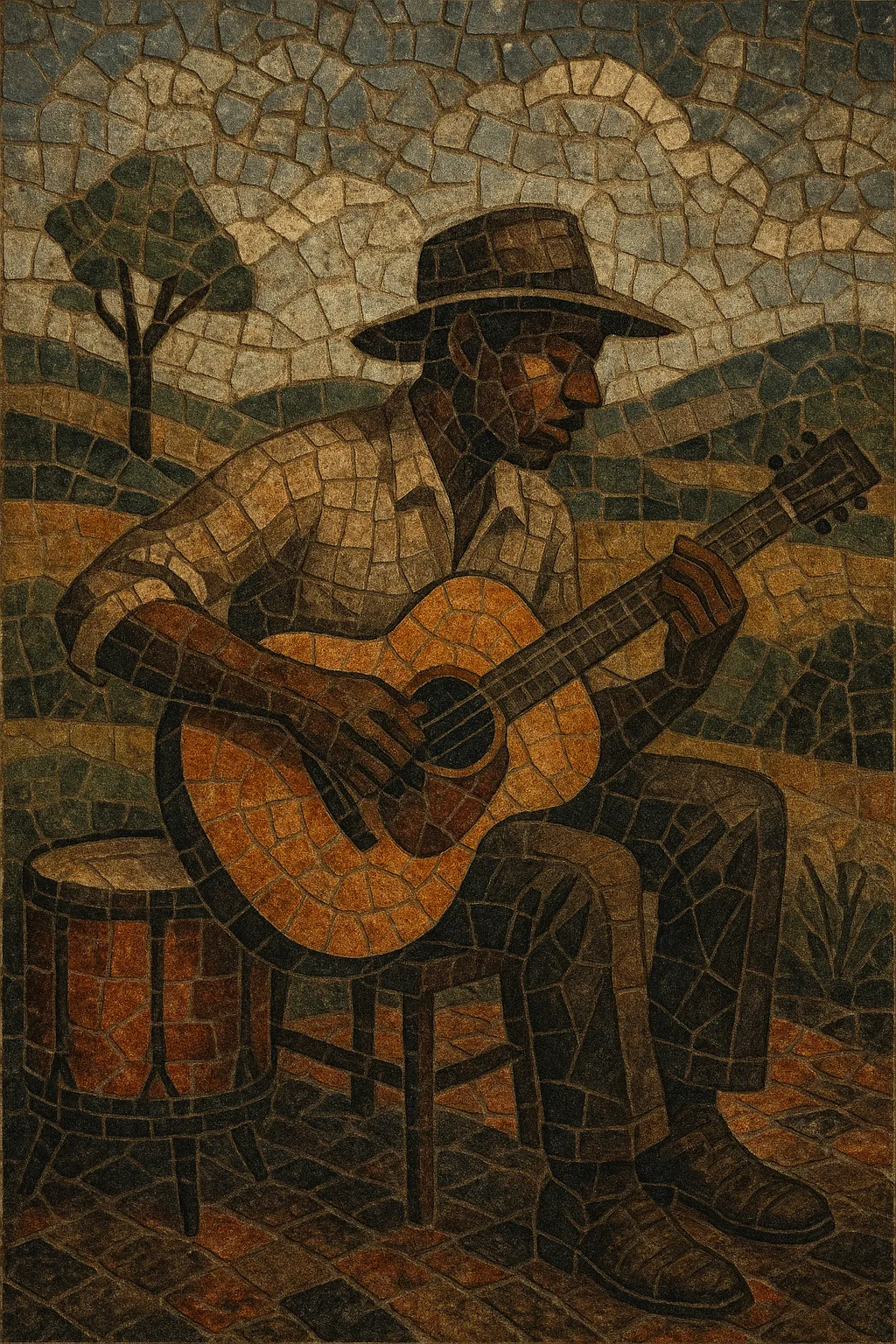
Hill country blues is a North Mississippi style of country blues built on hypnotic, groove-forward vamps rather than frequent chord changes. The music favors droning riffs, modal inflections, and trance-like repetition over the 12-bar harmony typical of Delta blues.
Guitars are often in open tunings with percussive right-hand patterns, slides, and call-and-response vocals. The rhythm is deeply influenced by local fife-and-drum traditions, producing interlocking, danceable patterns that can feel both raw and mesmerizing. Performances historically thrived in house parties and juke joints, where the music’s looping energy kept dancers moving for extended, improvisatory stretches.
Hill country blues emerged in the early 20th century among African American communities in the North Mississippi hill country (notably Marshall, Tate, and Panola counties). Unlike the chord-driven Delta style nearby, this music emphasized groove, drone, and polyrhythm, drawing on the local fife-and-drum picnic tradition and older African diasporic rhythmic sensibilities. Much of the early history was unrecorded, existing in informal gatherings and house parties.
The style reached wider ears in the 1950s and 1960s when folklorists and field recordists documented musicians such as Mississippi Fred McDowell. His slide guitar, open tunings, and repetitive, modal approach became a touchstone for the idiom, showing a clear alternative to the Delta’s 12-bar form.
A major revival arrived in the 1990s as labels like Fat Possum brought the raw juke-joint sound to international audiences. R.L. Burnside and Junior Kimbrough personified the hypnotic, single-chord vamps and relentless pocket of the style, while venues like Junior’s Place (Kimbrough’s juke joint) became legendary hubs. Jessie Mae Hemphill, Otha Turner’s Rising Star Fife and Drum Band, and others highlighted how closely the guitar style intertwined with the region’s fife-and-drum roots.
In the 2000s, the North Mississippi Allstars, Cedric Burnside, Kenny Brown, and R.L. Boyce helped carry the torch, blending the tradition with rock energy while retaining the trance-like essence. Festivals such as the North Mississippi Hill Country Picnic, plus modern recordings and streaming, have sustained a new generation of artists. The style continues to influence garage-inclined blues rock and punk blues while remaining a living regional tradition.

